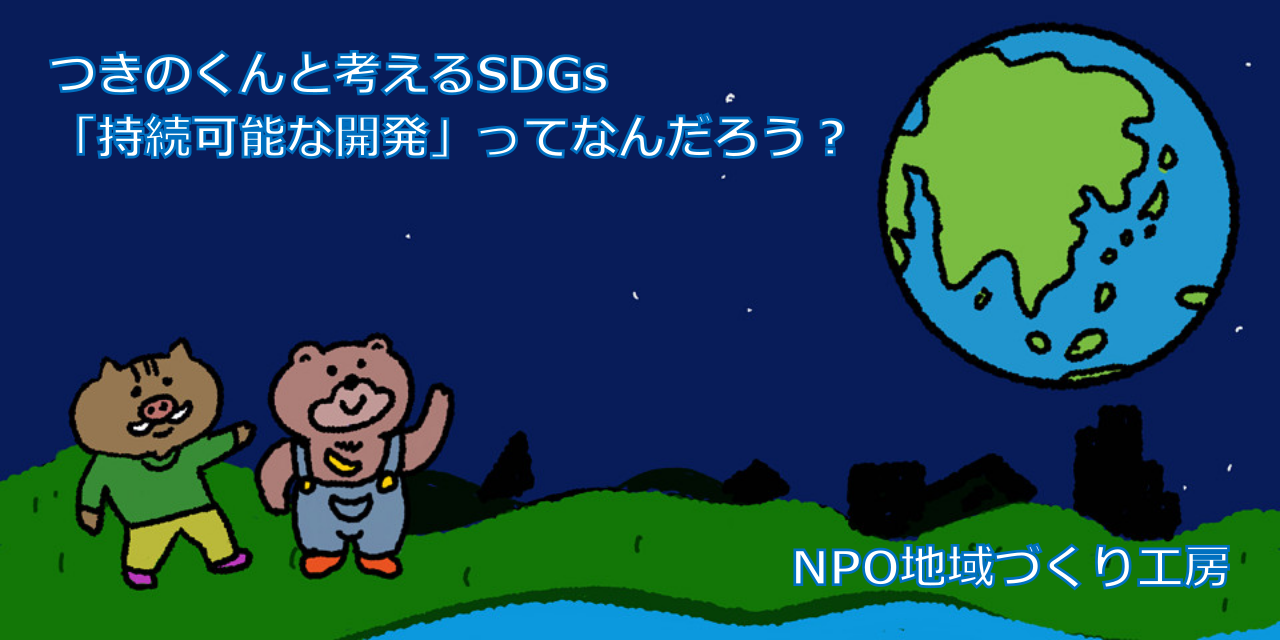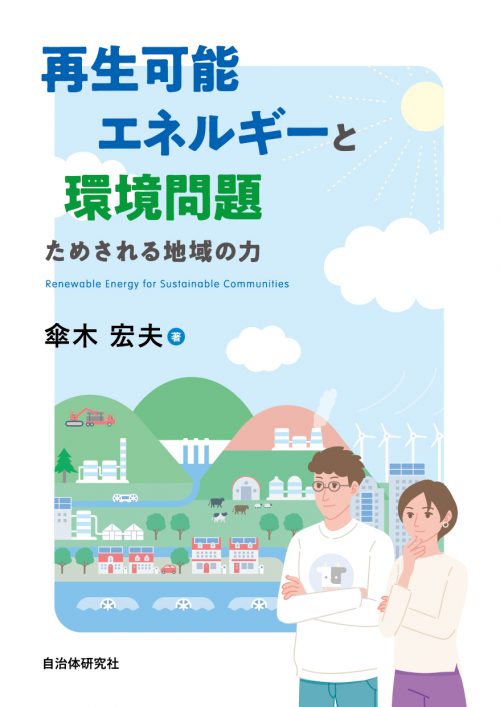
平成26年度地球環境基金の助成を受けて
作成しました。
3D simulation for voluntarily EIA by community
This paper will introduce case examples of a NPO working with business operators to assist in conducting voluntary environmental impact assessment (EIA) for smaller scaled projects. Here, we employ 3D virtual reality technologies to visualize the potential overall impact of the project and invite local residents into the discussion to ensure environmental preservation through effective communication.
1.What is voluntary EIA(Fig 1)
We define voluntary EIA as self-initiated environmental assessments for smaller-scaled projects that are not subject to mandatory EIA under governmental regulations, which is conducted by business operators to communicate with local residents over the environmental impacts of various business activities and projects.
This can avoid risks to the environment and also give the locals an opportunity to voice any concerns or ideas to reflect on the design proposals, which leads to improved environmental awareness and contribution to community planning.
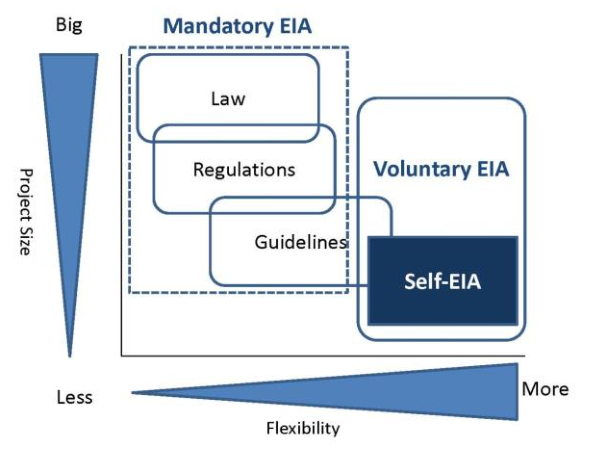
2.How the voluntary EIA works(Fig 2)
Since the EIA activities described here are completely voluntary, there are no rigid rules or procedures to follow. What is most important for business operators is to commit themselves to listen to the residents’ opinion on environmental preservation measures.
Normally, these voluntary EIA excluding post-project analysis would take around array half-year period. If it is considered there is no need for further EIA at the stage of prior assessment, publication of its reasons and already made efforts is recommended.
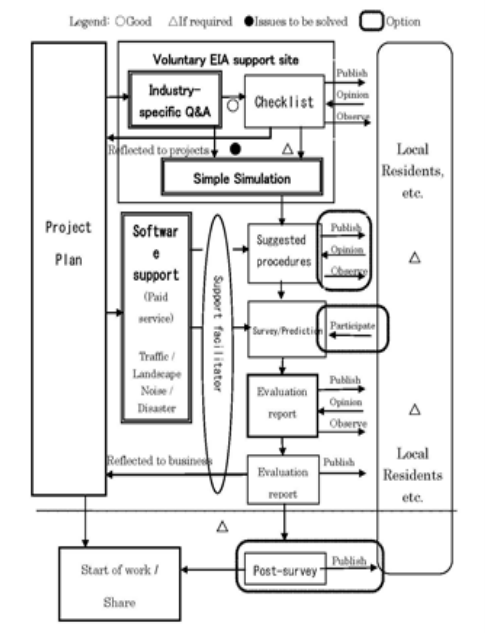
3.Real World Examples (company names undisclosed)
【Case 1 】Quarry Site (around 8 hectares of land )Despite the proposed quarry site was only 1/3 of the size subject to mandatory EIA, the company still chose to perform voluntary EIA out of concerns of potential opposition from the locals. The company proactively chose to visualize and simulate through a 3D VR environment over elements such as landscape changes, sunshine and shades, airflow changes (fig 3), and the movements of industrial vehicles. The simulations results are published on the Internet and various seminars and discussion forums were held and encouraged the inhabitants to raise any concerns.
Although the project was eventually abandoned due to reasons unrelated to the EIA itself, this voluntary EIA drew the warm attention of the local municipal government, paving way to a second example to be described in Case 2.
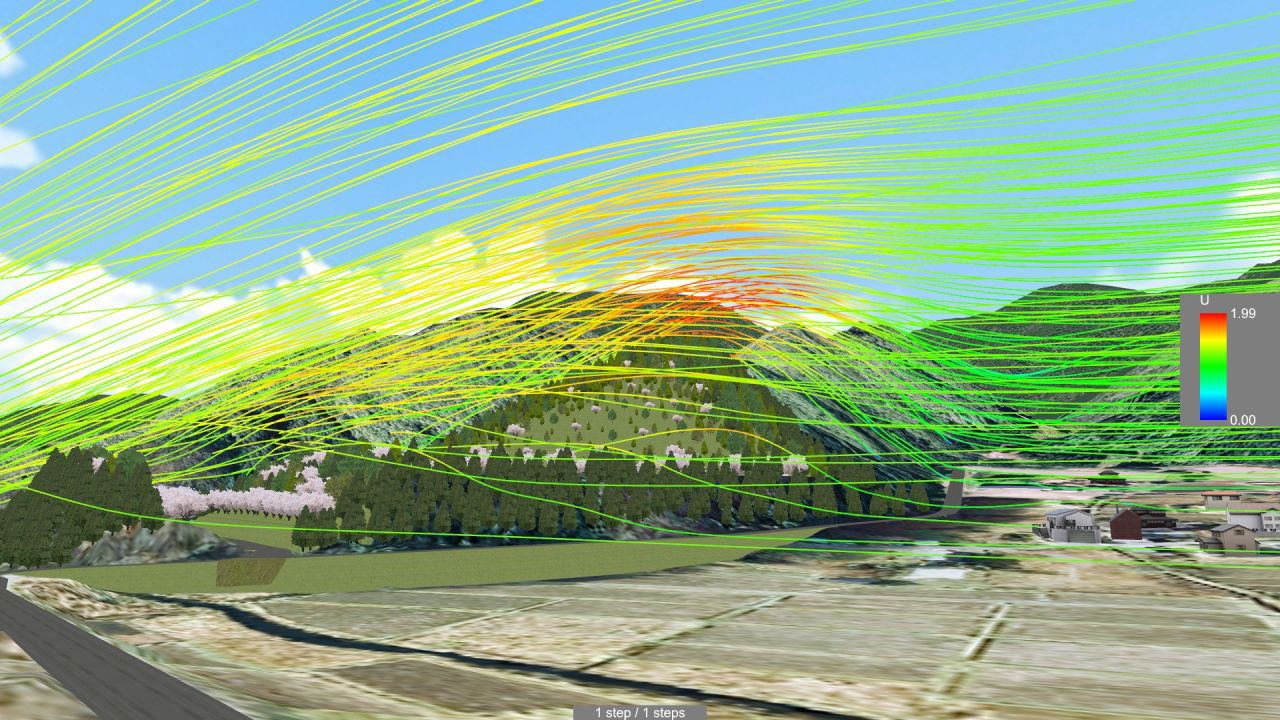
Another subsidiary under same parent company from Case 1 drafted a plan to convert an ex-fish hatchery reservoir into a solar power plant. The municipal government at first deemed the site “unsuitable”, out of concerns over potential negative landscape impacts. Undaunted and determined to persuade the governing bodies, the company voluntarily subjected themselves to EIA and openly discussed with the local residents their visions of the projects. Similar to Case 1, they also willingly publicized various 3D VR simulation results such as landscape changes, sunlight reflection issues, and movements of large industrial vehicles over the Internet. Various seminars and discussions with the local residents were held to find workarounds or innovations to improve the designs without adversely affecting the environment. The locals and the company ultimately reached a new proposal which was well thought out enough to finally receive the go-ahead sign from the municipal government.

Considering that photovoltaic power plant near the site was sued by local residents, a subcontractor from the project in Case 2 performed self-EIA to effectively communicate with the plaintiffs. They made similar efforts to Case 2 and explained traffic safety features so the construction will not endanger an elementary school nearby (Fig 5). It resulted in satisfactory launch of the plan.
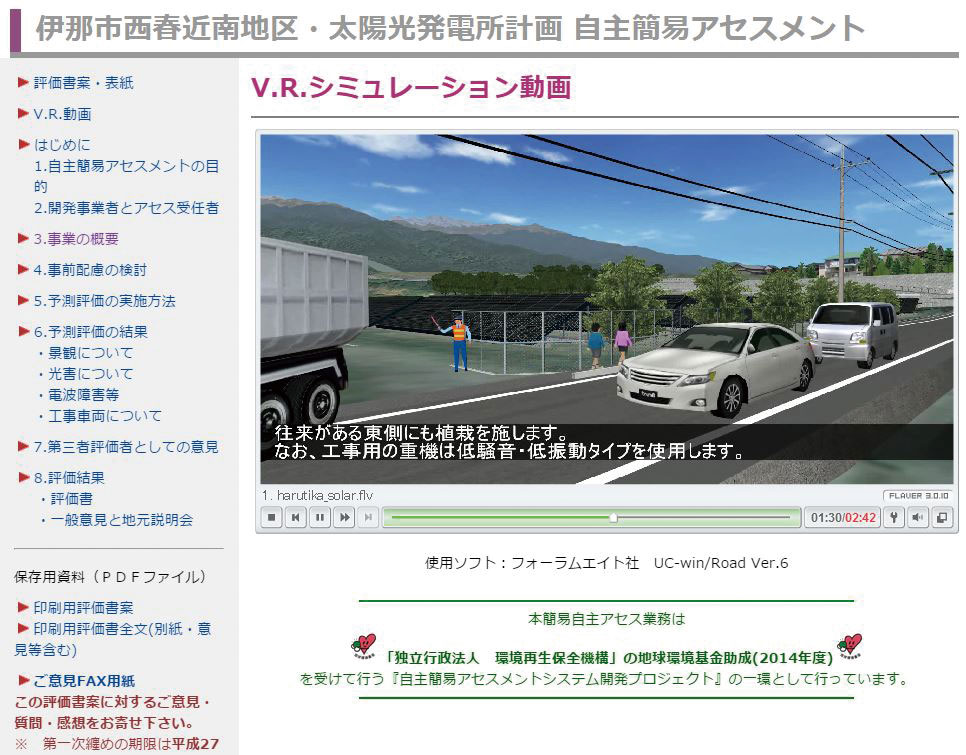
The NPO’s service was sought for an interjurisdictional tender project to propose plans for the construction and operation of a waste disposal incinerator. Elements and concerns such as the final project appearance that cannot be represented through standard EIA protocols were recreated through 3D-VR visualizations. All books and record related to the plan are currently publicized and explained to the residents at the meeting, to improve overall project clarity and transparency.
4.Establishment of the Simplified Self –Assessment Website
To encourage more businesses to perform self-EIA, the Simplified Self-Assessment Website was launched on April, 2015. The website has mainly 3 features:
① A simple checkup over the necessity of EIA for the company or project of interest. Sets of industry-specific Q&A questionnaires are filled out by the user to determine whether EIA is necessary. Various environmental consideration checklists and suggested procedures to perform the self-EIA will be generated by the system.
②Development and distribution of free software that can assist in EIA and environmental
diagnosis.
*“Solar Panel Reflection Check” allows the inputting of parameters such as longitude,
latitude, and panel angles, to retrieve sunlight reflection angles, categorized by different
dates and times, including solstices.
*“Green Coverage Rate Calculation” can calculate the coverage rate of visible green areas
within the visual range.
*“Environmental Diagnosis Result Mapping Support” feature assembles the site photos
taken from smart devices and reflect them on maps for better understanding.
③References and Background Materials: Introducing the details of various case studies and information helps to design and implementation of the assessment site. This website can be freely accessed by anyone, which also allows governmental agencies or local residents to also evaluate the any proposals they may have at hand, or as a part of business planning.
In order to popularize the idea of self-EIA, various activities such as seminars and environmental facilitator education lessons are also held via the aid of online materials or cloud services.

